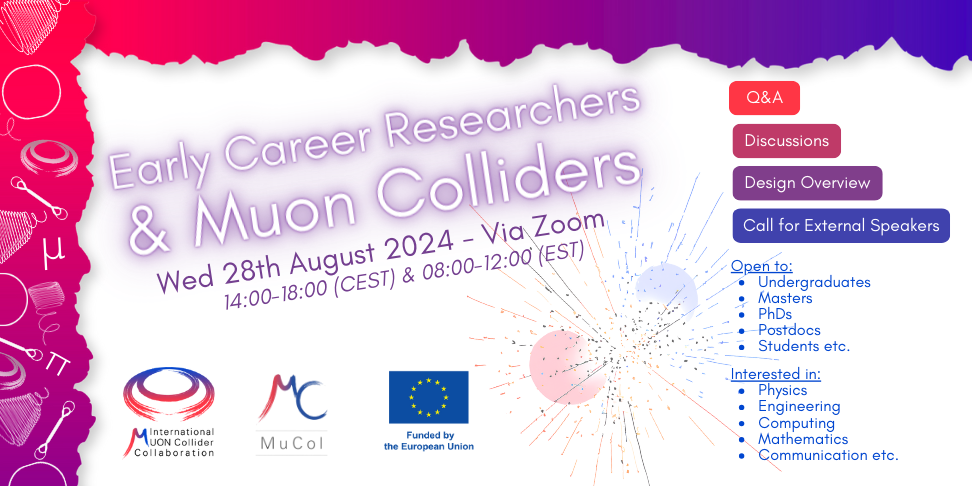Proton Driver, Target & Front-End
6D and Final Cooling
The strongest current bounds on lepton flavor violation (LFV) come primarily from low energy precision observables. While these experiments are expected to improve substantially in the next decade, there are cases where a muon collider could complement existing searches. In this talk, we utilize a SMEFT approach to explore the complementarity of muon colliders with low energy experiments for...
As a potential energy frontier machine, a multi-TeV muon collider presents a vast array of physics opportunities, ranging from Higgs and top quark production to W/Z factories, jet studies, and neutrino sources. At energies far exceeding the electroweak scale, radiation effects become crucial and demand careful consideration. I will introduce the electroweak parton framework for high-energy...
The muon collider stands as one of the most promising prospects for next-generation high-energy particle physics experiments. However, it presents significant challenges, particularly in managing the beam-induced background (BIB) resulting from various muon decay sources. Currently, several mitigation strategies are under investigation, such as leveraging timing information from the innermost...
In the context of design studies for a new experimental setup, automatic differentiation can play
an important role in helping to find the optimal configuration which meets specified
requirements. Setting up a differential pipeline that is able to condensate experimental
information into a loss, which is subsequently minimized, allows a global approach to a
configuration study, and can...
A summary of the beamline for the Fermilab Muon g-2 Experiment (E989) is presented. Particular focus is given to post-target elements such as the liquid lithium lens, along with momentum-cooling wedges in high-dispersion areas and a brief description of how the experiment storage ring has been optimised over multiple experiments since 1959.
